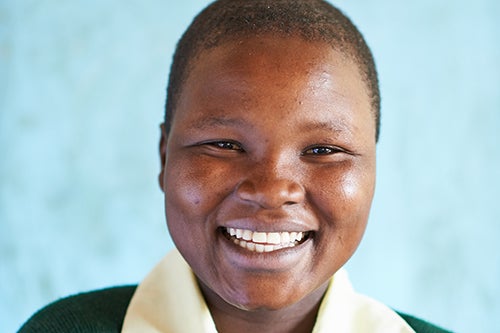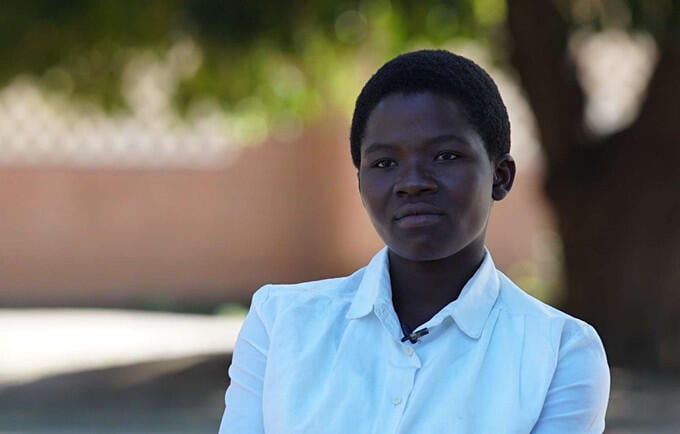UNITED NATIONS, New York – Around the world, Valentine’s Day is celebrated as a romantic time for couples. Yet millions of children are coupled up before they are ready, often against their wills. Child marriage exposes them to violence, including rape, and it often forces them out of school and into premature parenthood.
Child marriage is a tragedy for the individuals it ensnares – often the most vulnerable, impoverished and marginalized girls. But it is also bad for communities and societies as a whole, locking child brides and their families in a cycle of poverty that can persist across generations. Ending child marriage – enabling girls to finish school, delay motherhood, find decent work and fulfil their potential – could generate billions of dollars in earnings and productivity, studies find.
This year, for Valentine’s Day, UNFPA is calling on the world to prioritize ending child marriage.
Below are five little-known facts about child marriage. Better awareness of the problem, its pervasiveness across the world, and its consequences, may help leaders – as well as young people themselves – end the practice once and for all.
1. Child marriage is common. It takes place in every corner of the world.
More than 700 million women and girls alive today were married before their 18th birthday.
Because poverty is one of the main driving factors behind child marriage, the phenomenon is most widespread in low- and middle-income countries, where 26.7 per cent of young women were child brides. Rates vary by country and region. West and Central Africa have the highest rate of child marriage, with four in 10 girls married before age 18. South Asia is home to the largest total number of child brides.
Yet child marriage also takes place in high-income countries. Examples of this harmful practice can be found everywhere.
In Nicaragua, Irayda ran away from an abusive home to get married at age 14. “Before I was 15, I was already pregnant,” she told UNFPA.
As is often the case, the responsibilities of married life and parenthood pushed her out of school, limiting future options for herself and her daughter. “I would have liked to stay in school instead of dropping out,” she said.
2. Both boys and girls may be married off as children – but girls are much more vulnerable to the practice.
Boys can be – and are – married off as children. New UNFPA figures evaluating data from 82 low- and middle-income countries show that 1 in 25 boys, or 3.8 per cent, marry before age 18.
“I was a child,” a young man in Yemen recently told UNFPA about getting married at age 16. His wife was 13. “I could not make my own decisions,” he explained. “My father ordered me to marry, so I got married.”
Marriage at such an early age foists both boys and girls into adult responsibilities before they are ready. All children in these precarious circumstances are less able to advocate for themselves, and are vulnerable to abuse and exploitation.
Yet there are harms that accrue to girls much more frequently than to boys. Studies show child brides are especially at risk of violence – from their spouses, in-laws, or even from their own families.
In Uganda, 15-year-old Abura* refused to marry the man her father selected for her. Her father and brother beat her and then locked her in with her husband, who raped her. She ran away, surviving in the bush for three weeks before she returned home, where her brother beat her again. Eventually, she escaped to a shelter for survivors of violence.
Child brides are also more likely to become pregnant before their bodies are mature, increasing the risk of serious complications.
And girls are much more likely to be married off when they are very young. While the majority of child marriages take place among 16- and 17-year-olds, there are many countries where girls are commonly married before at 15. Among boys, these very early marriages are virtually non-existent (0.3 per cent).
3. Child marriage is almost universally banned
Two of the most broadly endorsed human rights agreements in the world, the Convention on the Rights of the Child and the Convention on the Elimination of All Forms of Discrimination against Women, prohibit child marriage. Together, these treaties have been signed or ratified by every country except one.
Yet around the world, there are national or local laws that enable different interpretations of this agreed principle. Many countries permit child marriage to take place with parental consent or under religious or customary law, for example.
Bertha was a child bride in Malawi. Malawi has laws prohibiting marriage before age 18, but for a time these laws conflicted with language in the Constitution permitting marriage to take place earlier with parental consent. The Constitution was amended last year to eliminate this contradiction.
“I experienced serious complications while giving birth to my daughter because my body was not mature enough for childbirth,” Bertha told UNFPA. She needed an operation and a week of hospitalization to recover after her baby was born. She is now 17 and no longer married. “Many girls like me want to be in school and not married,” she said.
Even in places where child marriage is clearly illegal, enforcement can be a problem. Around the world, many marriages are not legally registered, for example.
In Nepal, the legal minimum age for marriage is 20. Yet about half of women report they were married before or by age 18. Puja’s sister was one of them. “My sister wasn't ready to be a bride at 17,” Puja told UNFPA. “Her marriage was against her will. Right after her marriage, she became a mother. She had to quit her studies, too, after that.”

4. Child marriage and teen pregnancy are closely – and dangerously – linked
Child marriage is often a precursor to early pregnancy. In developing countries, 9 out of 10 adolescent births take place among girls who are already married. These early pregnancies pose serious health risks to girls whose bodies may not be developed enough for motherhood. Globally, complications from pregnancy and childbirth are the leading cause of death among adolescent girls.
Ameena, in Yemen, became pregnant soon after she was married at age 15. “I did not know what was happening to me during my first pregnancy. It felt that something scary was happening inside my stomach. I damaged my spine because of this early pregnancy. I was not ready to give birth. I was not ready to have a husband. I did not know what marriage was.”
Sometimes, these injuries can be emotional, exacerbated by girls’ exposure to violence. Freshta*, in Afghanistan, experienced a serious post-partum mental illness after she was married off at 12 to a man in his 60s. “I got pregnant and gave birth. He didn’t allow me to see my baby, hug him, kiss him and feed him,” she told UNFPA. “I wanted to finish my life because of all the torture.”
Early pregnancy also puts girls at risk of being married off. Girls may be forced to marry the father of their baby – even a rapist – to spare their families the stigma associated with unmarried pregnancy.
In Kenya, Eunice became pregnant in 2013, and her father tried to marry her off to the baby’s father. When the man refused, his own elderly father decided to marry her instead. Eunice tried to run away, but she was caught. “They really beat me up, a beating like I had never experienced in my entire life. I really suffered and cried a lot,” she told UNFPA. Eventually, her mother found her and reported the abuse to police. Today, Eunice is 16 and in school.
5. Empowering girls is critical to ending child marriage
But young people must also be empowered to stand up for themselves and their rights. This means they must be given accurate information about their sexual and reproductive health, and about their human rights.
It may seem simple, but such information can be life-changing. When vulnerable young people are empowered with this knowledge, they can advocate for themselves, and even persuade their families to cancel or delay engagements.
UNFPA works with partners and communities around the world to educate and empower girls, and to raise awareness in communities about the dangers of child marriage.
Many of these girls have become advocates in their own right.
In Nepal, 16-year-old Kabita belongs to an adolescent girls’ group supported by the UNFPA-UNICEF Global Programme to Accelerate Action to End Child Marriage. “If I quit my studies, I will be married off immediately,” she told UNFPA. As a result, she is determined to stay in school. “A brighter future starts with an education,” she said.
In Zambia, 12-year-old Linda visits a UNFPA-supported safe space for girls. “I now know that child marriage is wrong. Child marriage prevents girls like me from achieving our future goals.”
She added, “I see a lot of girls get married early, and soon afterwards become pregnant or become infected with HIV. This should not be happening in our communities because girls should be in school and working hard to become teachers, doctors and lawyers and any other career goals they want to achieve.”


